Water in the garden has a long history, as long as gardens themselves. Any history of gardens and gardening will show that the Mesopotamian, Egyptian, Chinese, Roman, Japanese, Persian, Mughal, Aztec, French, Italian, Dutch and Spanish gardens all featured water prominently in their designs.
I particularly remember reading The Gardens of Mughal India, by Sylvia Crowe and Sheila Haywood, with photographs by Susan Jellicoe, published in 1972, which showed the essential nature of water in these gardens of Persian tradition introduced into India during 1500-1700. The Paradise Garden was enclosed and always included water in the form of fountains, pools and rills. The tradition of dividing the garden by rills continues to this day, for example, in Spain.
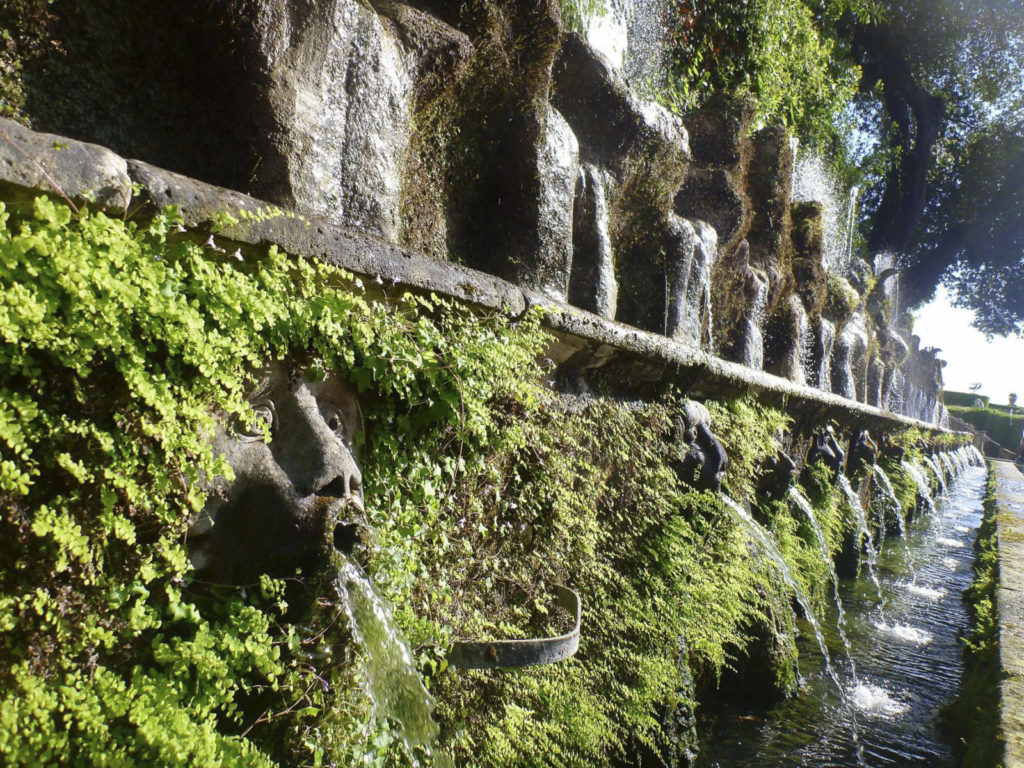
Gardens that we have visited that use water particularly well include Villa d’Este near Rome, Italy. Not everyone has the means to divert a whole river to provide water for the fountains and pools of their garden, but Cardinal Hippolito d’Este did just this in 1550. Water is present everywhere in this garden, spouting from every orifice of every statue and culminating in a water organ, which does play sweetly.
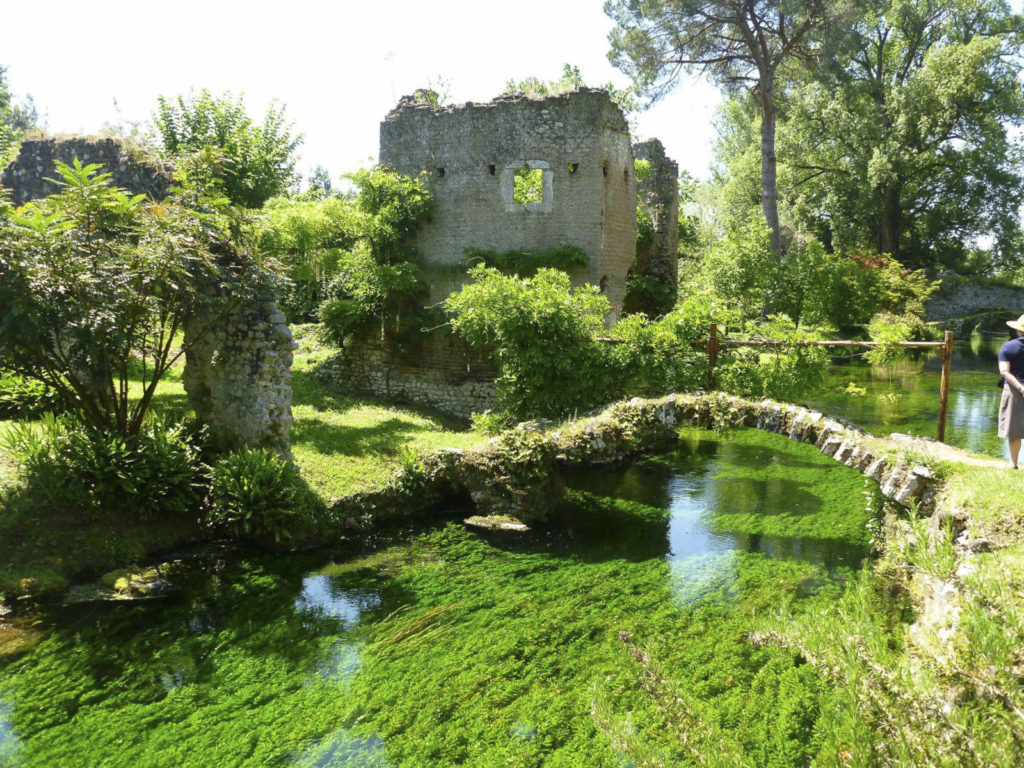
The garden at Ninfa in central Italy was built in 1921 amongst the ruins of a medieval town which was devastated by malaria in the 1500s and deserted for several centuries. These picturesque ruins provide a romantic backdrop for the garden, but the major feature of the garden is a stream that runs through the whole garden. This steam, drawn from the nearby mountains, is so clear that the bottom vegetation is seen as bright green gently waving ribbons.
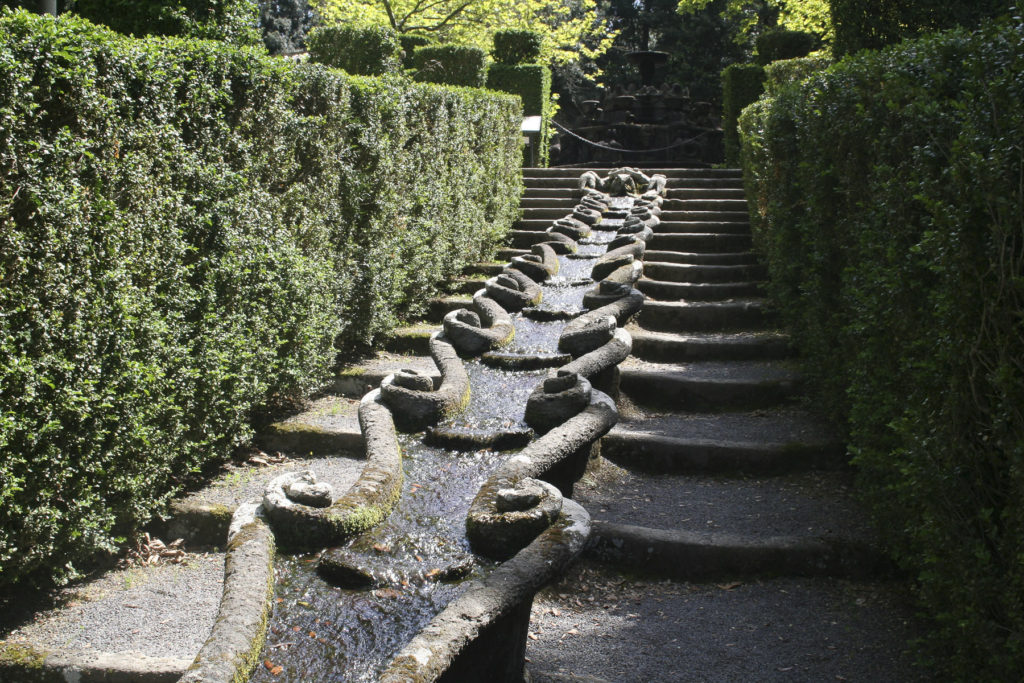
The sound of water is featured in many gardens. At Villa Lante near Rome this ornate water feature provides a background tinkling sound that enhances the garden around it.
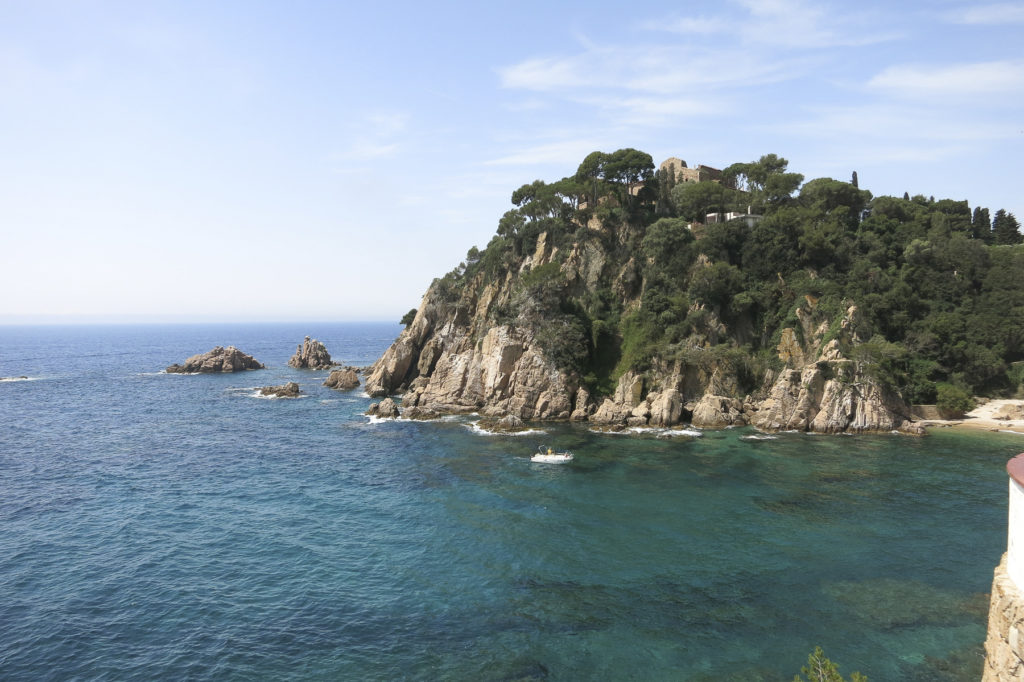
Gardens which occupy the best sites always include water in the vista. The garden of Jardin de Santa Clothilde in Spain includes the ultimate water feature, the sea, in its design on the Costa Brava. The garden at Villa Carlotta on Lake Maggiore is careful to feature the lake in every garden view.
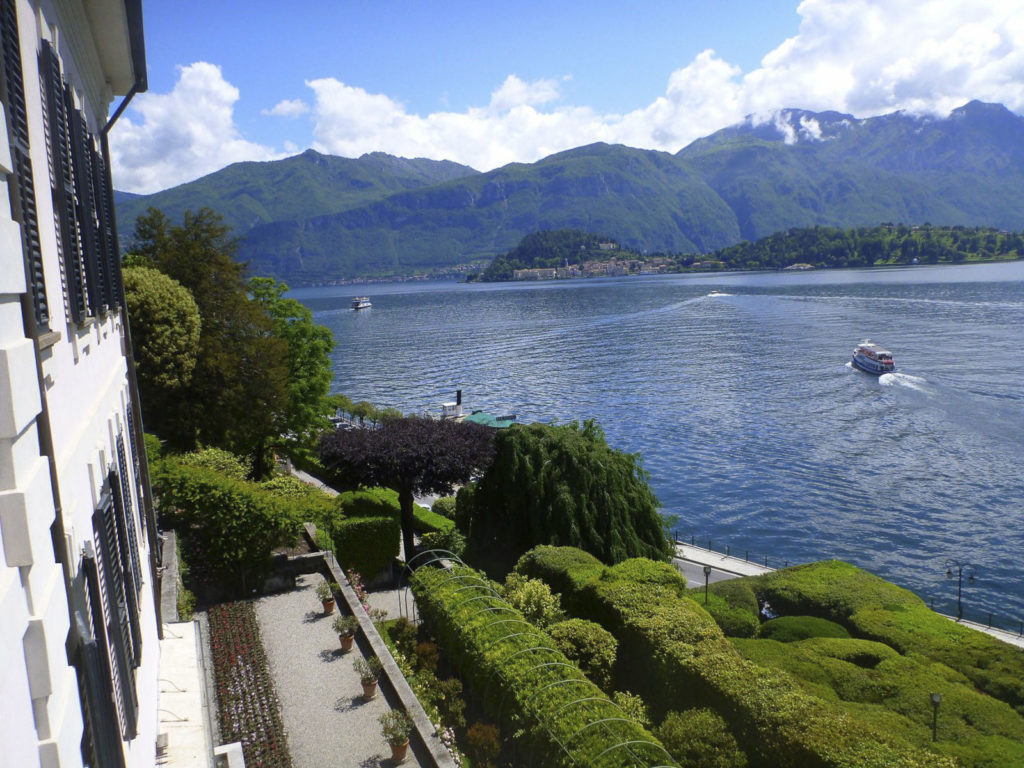
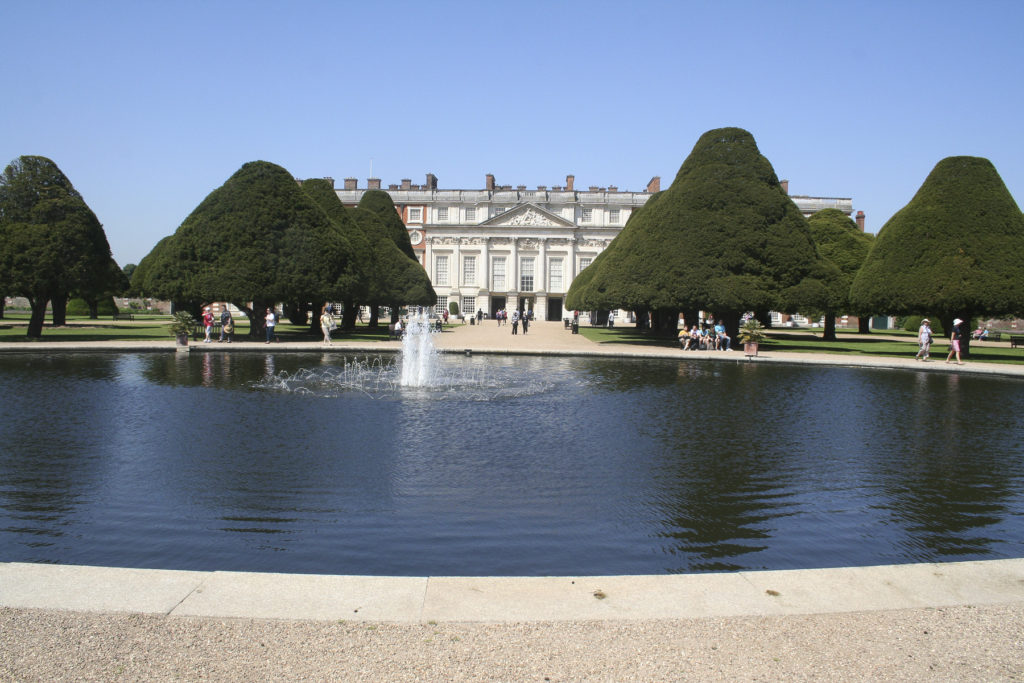
One of the most beloved water scenes has been constructed at Giverny, outside Paris, the garden of the Impressionist painter Claude Monet. A lake filled with waterlilies provided much inspiration for Monet and for countless painters after him.
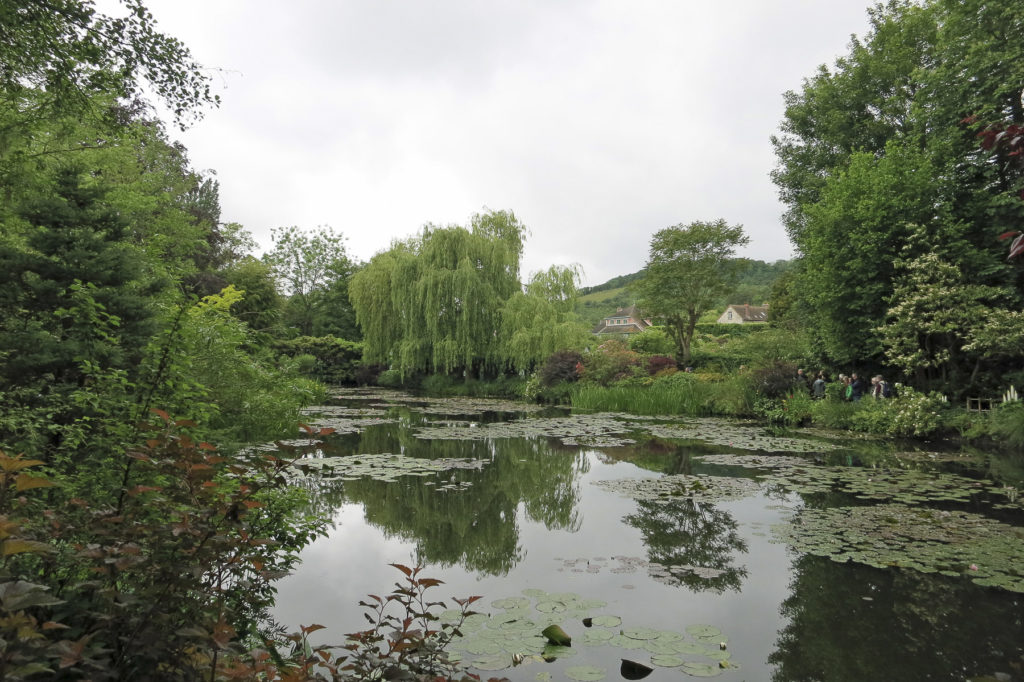
In Australia, a dry country, water has always been included in our garden designs. At the Royal Botanic Gardens in Cranbourne the water features are large and impressive. The Rockpool Waterway consists of an escarpment wall built of red rusted steel and a wide shallow waterway with flat rocks included. The dry river bed is symbolic of all the dry creek beds and river beds around Australia.
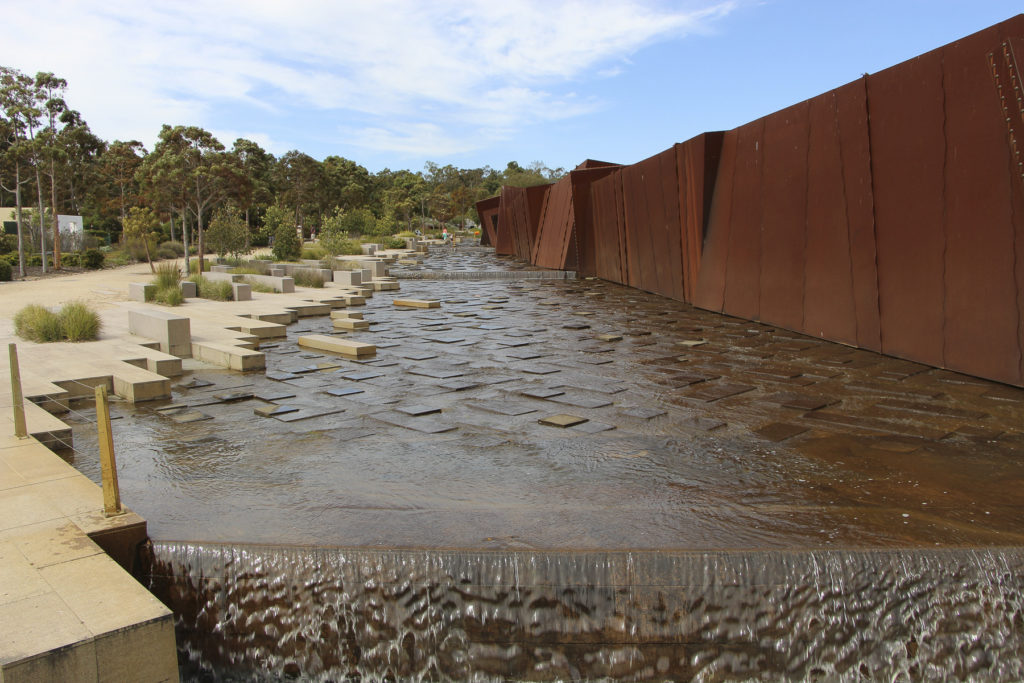
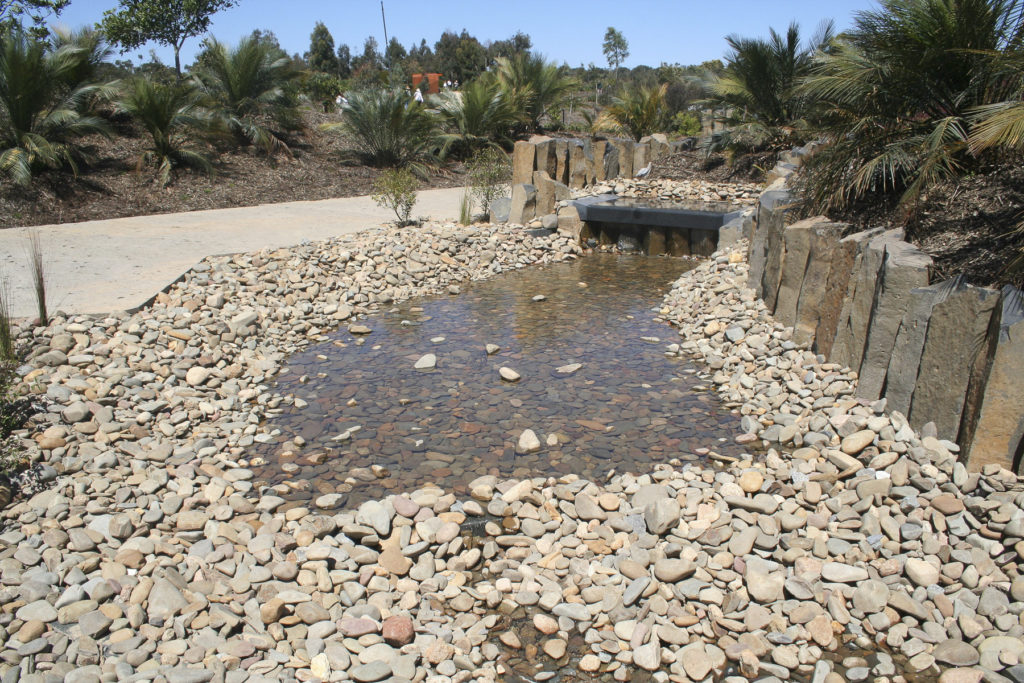
The magnificent Horse Island native garden on the south coast of New South Wales, is surrounded by the Tuross estuary, which forms a background to the whole garden. This garden also includes a formal pool and rills at the centre of the main garden.
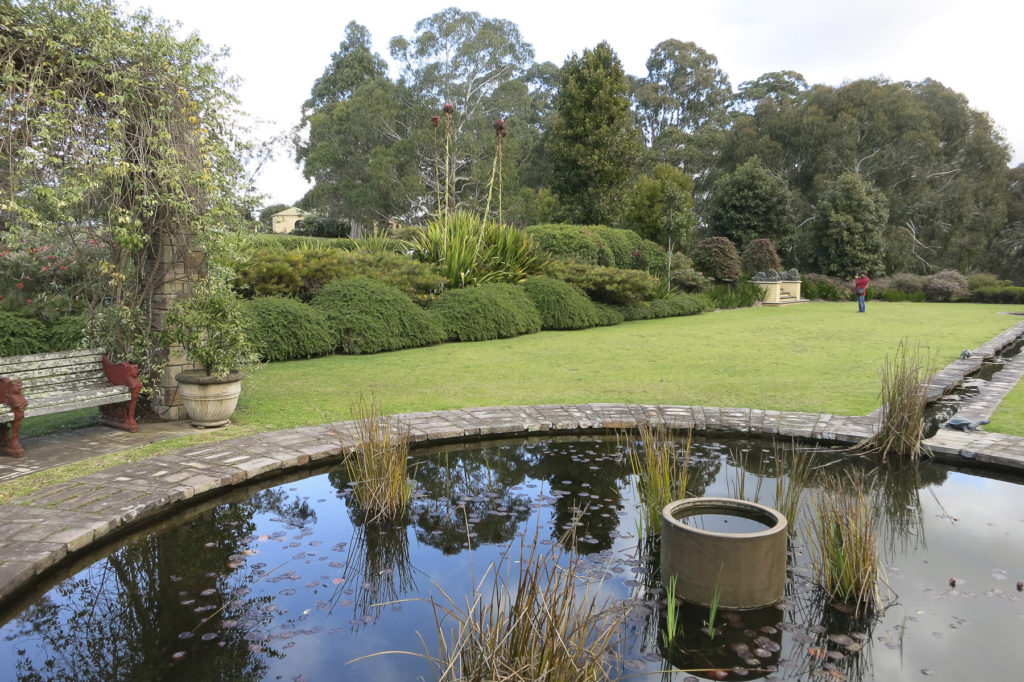
Even small water features can have tremendous impact – here is a small pool at the garden of Peter and Lyn Woodbury which acts as a gathering place in the garden.
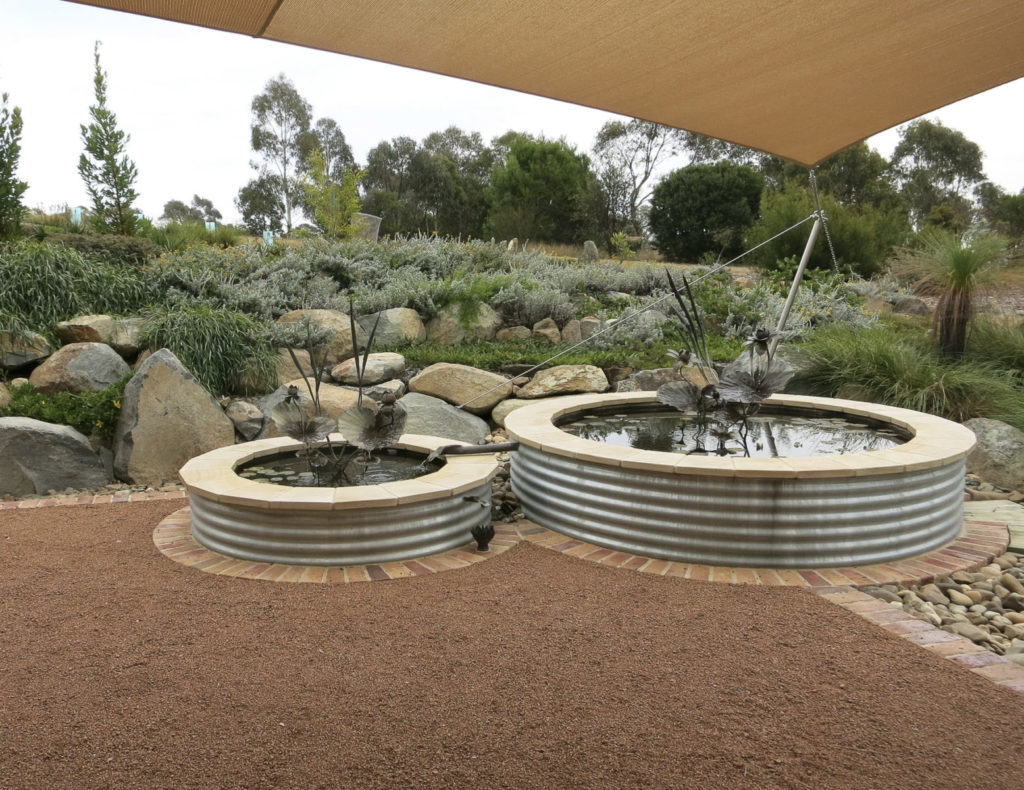
Our own garden has a series of pools connected by a creek running over stones which provides background water music for the garden. The largest pool has a natural clay bottom and is filled with reeds, fish and birds.
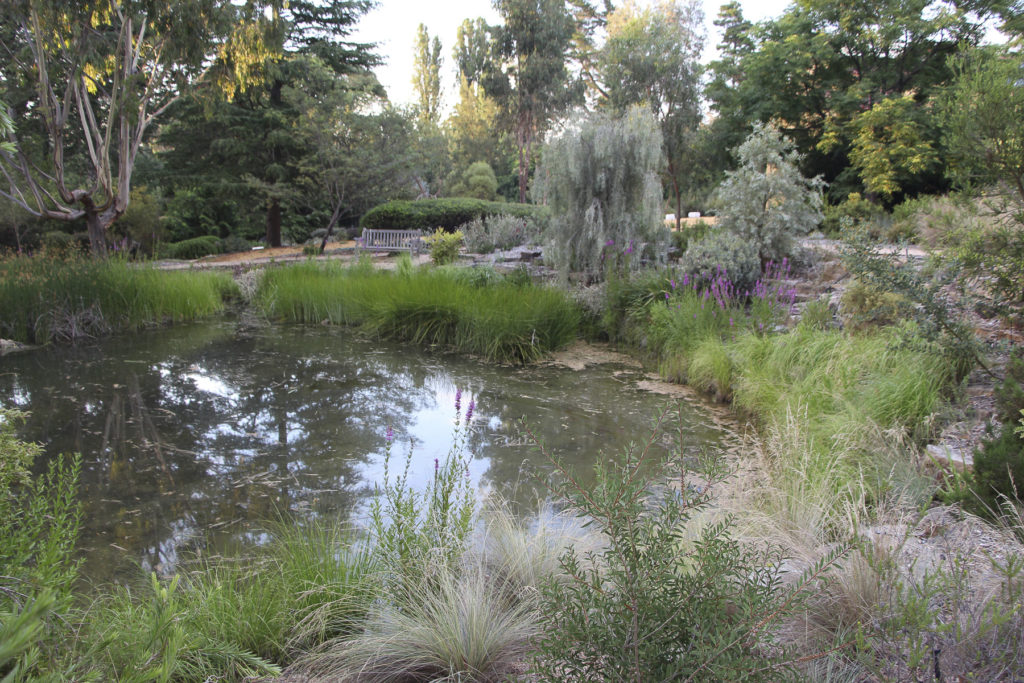
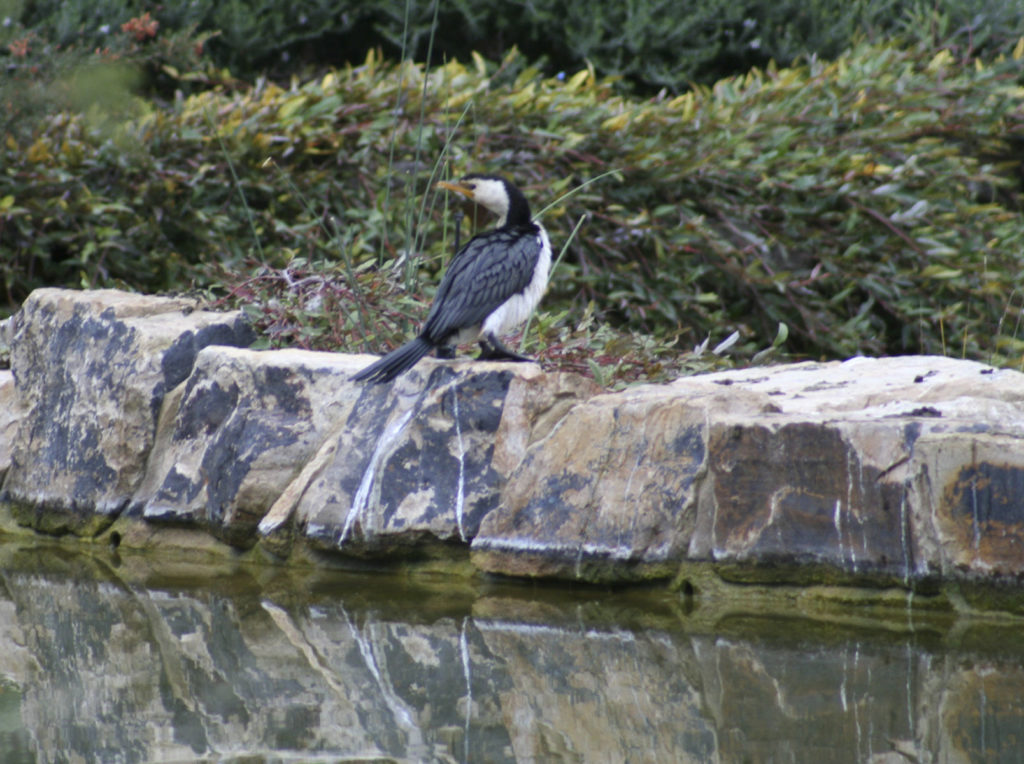
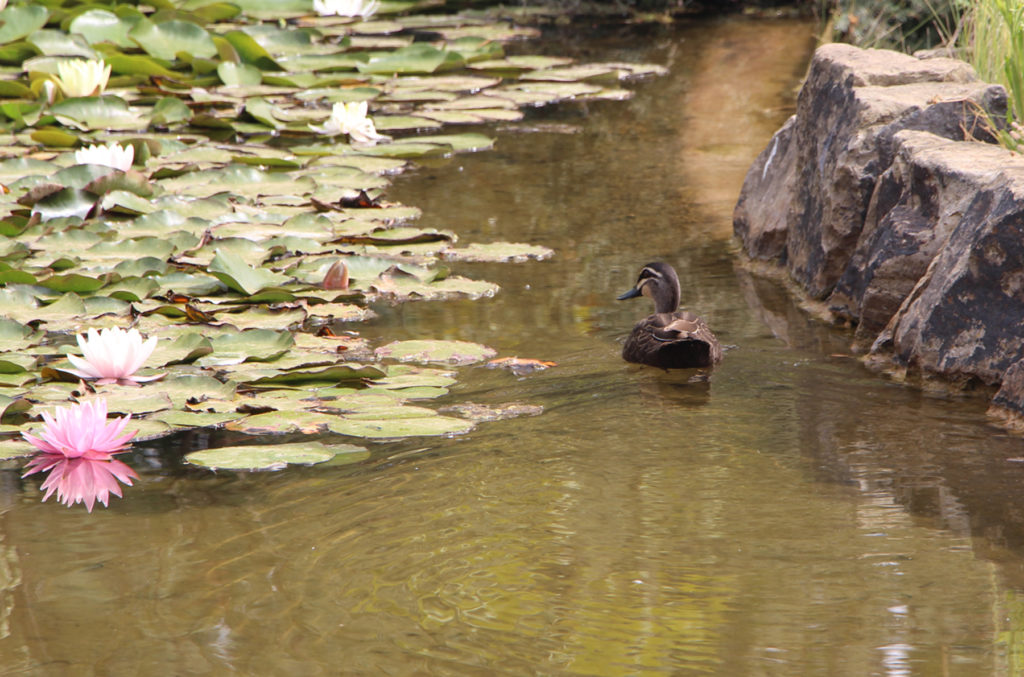
This article first appeared in GardenDrum in 2018.
